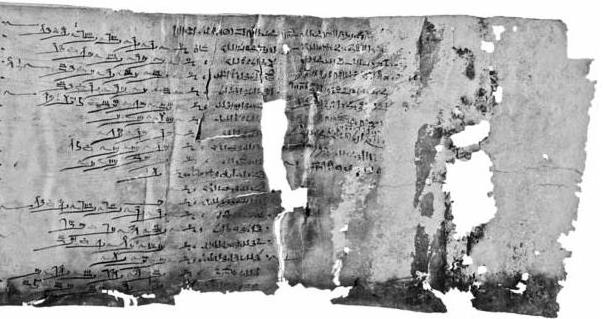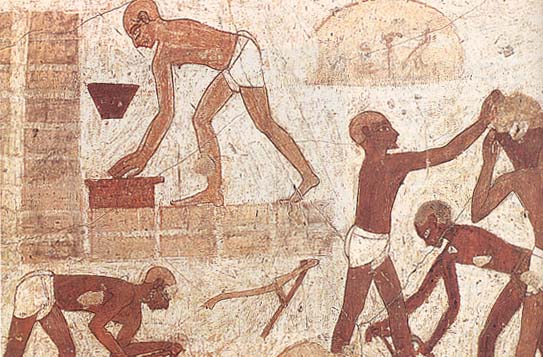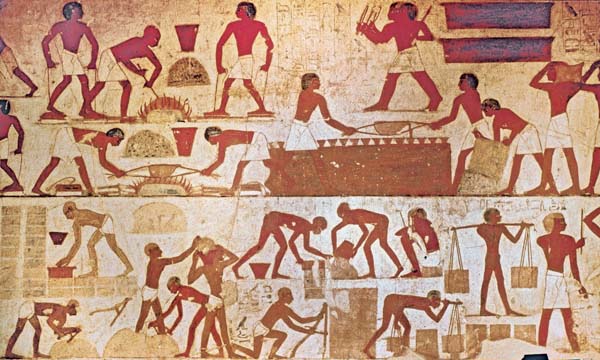“Paherypedjet son of Paser” is one of the brickmakers who fails to deliver his quota of 2,000 bricks, according to a list on a leather scroll from the fifth year of Ramesses II, now in the Louvre. The text echoes the Biblical story- Pharaoh, angry at Moses, stops providing the Israelites with straw for the bricks, leaving them to forage for it on their own but still requiring them to fulfill the same quota of bricks. Pharaoh says to Moses, “‘Lazy, that’s what you are—lazy! That is why you keep saying, “Let us go and sacrifice to the Lord.” Now get to work. You will not be given any straw, yet you must produce your full quota of bricks’” (Exodus 5-18).
This same Egyptian text indicates that workers were granted time off for their religious holidays. Similarly, a text discovered in the workmen’s village of Deir el-Medineh states that workers had gone “to offer to their god.” This of course is reminiscent of the Israelites’ request to take off three days to go into the wilderness to worship their God (Exodus 3-18, 5-3).
Tomb of Rekhmire Close-Up
“The Egyptians became ruthless in imposing tasks on the Israelites,” the Book of Exodus 1-13–14 recounts, “and made their lives bitter with hard service in mortar and brick.”
The Hebrews’ labors for Pharaoh were no doubt similar to these realistic scenes painted on the walls of the tomb of Rekhmire, the Egyptian vizier (or prime minister) in the mid-15th century B.C.E. Two workmen with hoes (bottom left) knead clay moistened with water; a third, kneeling figure (lower right) tightens his hoe. Other workers pass buckets of wet clay to two brick makers (upper right), who use molds to form the bricks. At top left, a worker constructs a wall with the newly manufactured bricks. The accompanying inscription declares that the workers are “making bricks to build anew the workshops in Karnak.”
“Out of Egypt,” BAR Jan-Feb 2007.
Shanks, Hershel, ed. Ancient Israel From Abraham to the Roman Destruction of the Temple. Washington DC- Biblical Archaeology Society, 1999. p. 39.
Kenneth A. Kitchen, “From the Brickfields of Egypt,” Tyndale Bulletin 27 (1976), pp. 145–146.


